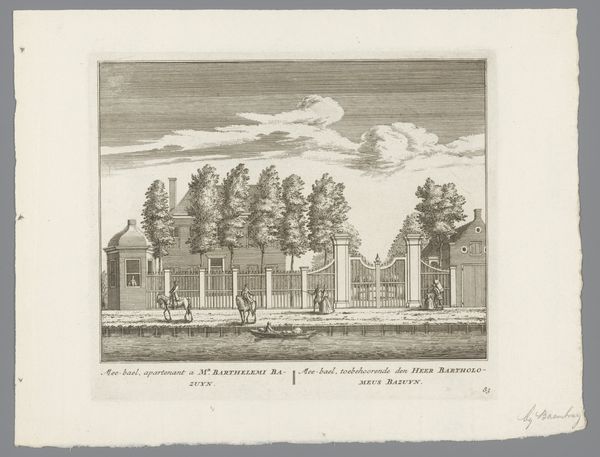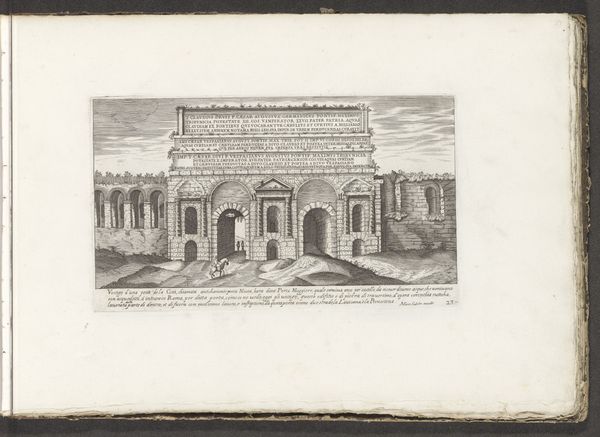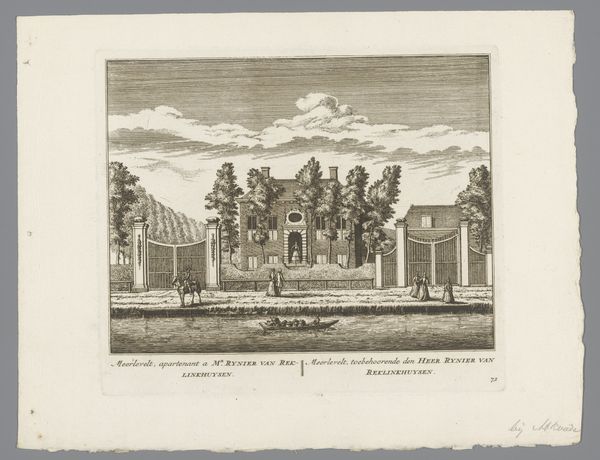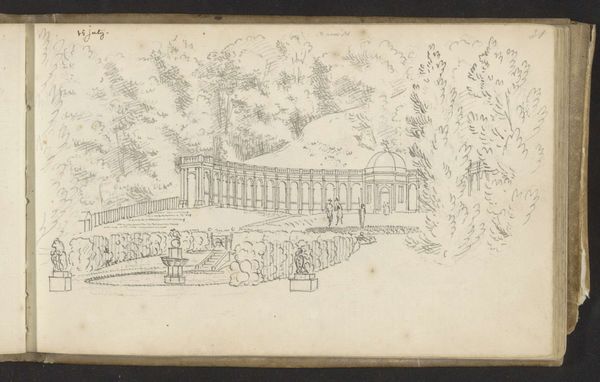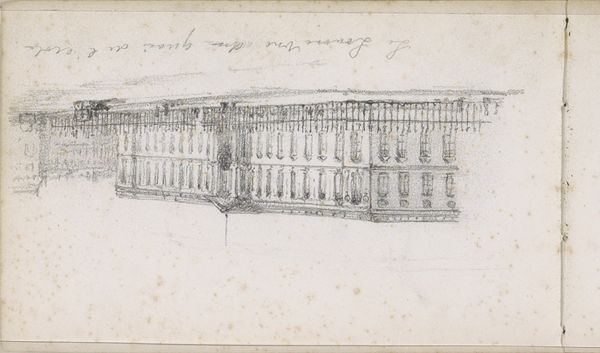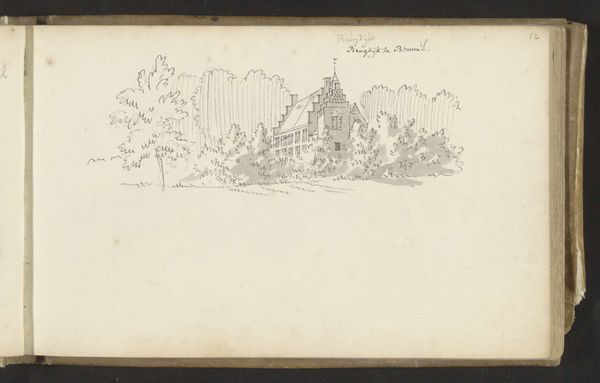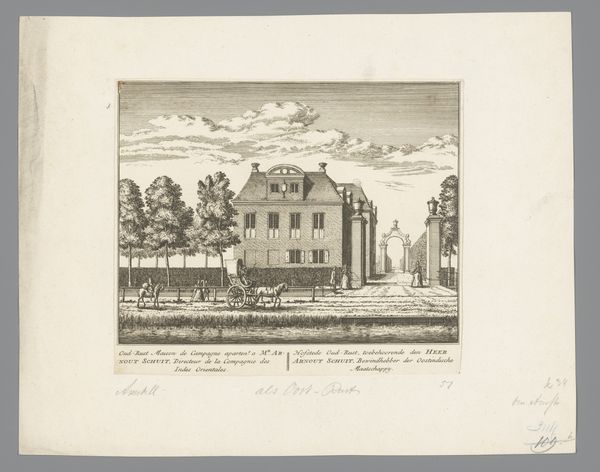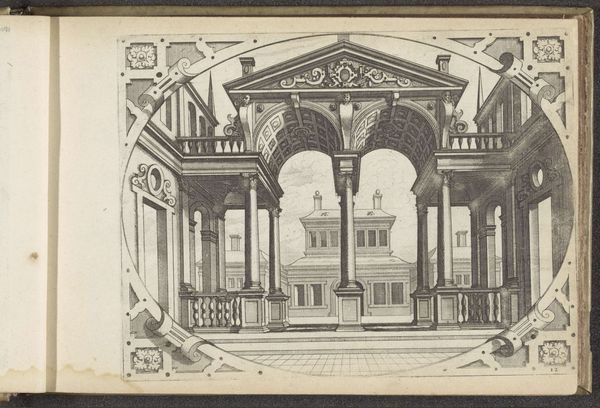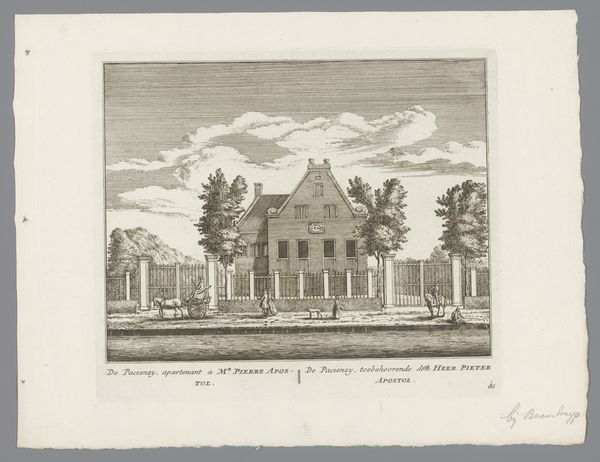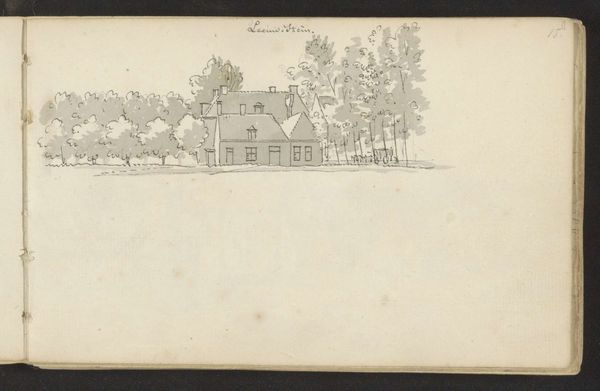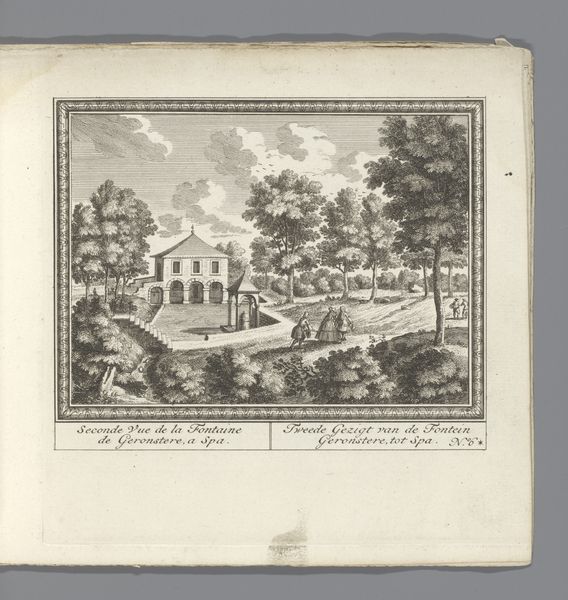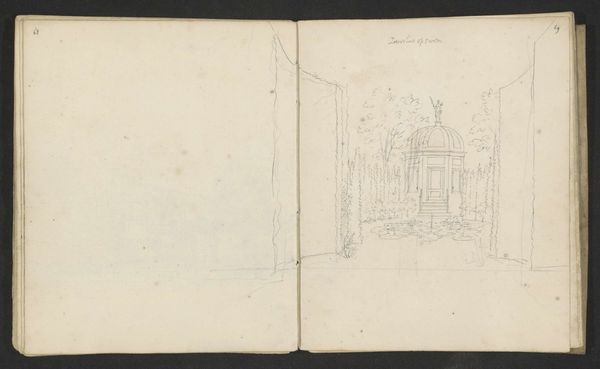
drawing, paper, ink, architecture
#
drawing
#
baroque
#
landscape
#
paper
#
ink
#
architecture
Copyright: Rijks Museum: Open Domain
Curator: Here we have Abraham de Haen the Younger's "Havezate Oldengaerde te Dwingeloo," likely drawn between 1732 and 1737. It's ink on paper, a delicate rendering. Editor: It's charming, almost austere in its precision. There’s a starkness to the light and the meticulous details that suggest a formal, almost detached relationship to the subject. What do we know about who commissioned these kinds of landscapes? Curator: Landscape views were often commissioned by landowners to document and celebrate their estates. This drawing exemplifies baroque sensibilities through its balanced composition and emphasis on architectural detail. Notice how the artist carefully delineates each window and the symmetrical arrangement of the buildings. Editor: Absolutely, and seeing this prompts so many questions about land ownership during that era. Who benefited from the estate, and what impact did that land tenure have on the lives of those living and working there? These grand estates often masked significant social inequality, didn't they? Curator: Such landscapes often idealize these settings, yes, but focusing on the formal aspects we see how de Haen uses line to create a sense of depth. Observe the varying line weights—thicker lines for the foreground, thinner lines for elements receding into the distance. This adds spatial clarity. Editor: Right, it also reminds me how important these idealized depictions were in shaping notions of landscape and ownership in the Dutch imagination. They functioned as both records and endorsements of a specific social order. Were the artists like De Haen always supportive of this system or were there voices of dissent we are failing to consider by solely focusing on his technique and composition? Curator: Those are fascinating questions. Perhaps later analysis will address those. For now, I find the drawing's inherent restraint, its structured rendering, quietly captivating. It demonstrates refined mastery of technique within specific parameters. Editor: Agreed, but I am equally fascinated by how this serene depiction serves to both reveal and conceal its era's intricate socio-political power structures.
Comments
No comments
Be the first to comment and join the conversation on the ultimate creative platform.

